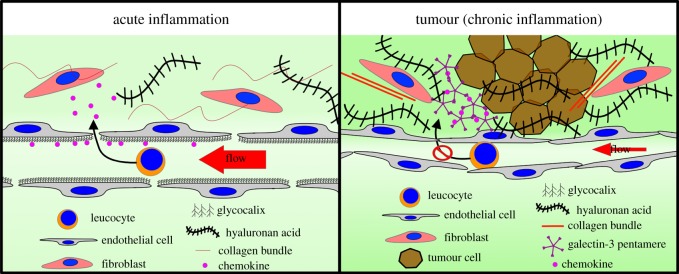Figure 2.
Immune infiltration. Similar osmotic pressures between fenestrated small capillaries and adjacent tissue enables normal exchange of small molecules in organs. During acute inflammation, this allows diffusion and gradient formation of chemoattractants that are partially trapped by the luminal glycocalyx of the endothelium, assisting leucocyte recruitment into the inflammation site. Cancer development represents a chronic inflammatory response in which vasculature is affected in a number of ways. Tumour growth and excess of ECM components such as collagens and hyaluronan acid increases interstitial fluid pressure that hinders molecule exchange. Blood vessels become tortuous, impeding normal flow and extravasation of leucocytes. Furthermore, cancer cells can induce loss of the luminal glycocalyx in endothelial cells, impeding the formation of chemoattractant gradients, which are retained within the tissue bound to tumour-derived galectin-3 lattices.

